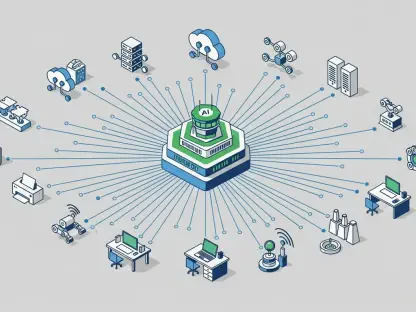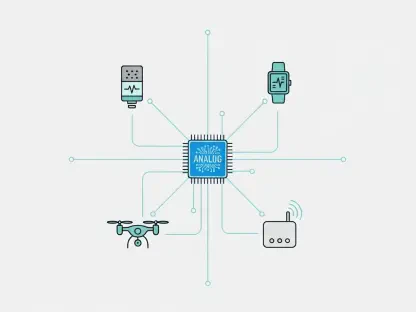Laurent Giraid, a leading technologist in the field of Artificial Intelligence, has been at the forefront of exploring machine learning and natural language processing technologies. With a keen interest in the ethical implications of AI, Laurent has been deeply involved in the conversations around infrastructure and the role that startups like E2B play in transforming enterprise landscapes.
Can you describe E2B’s core technology and how it specifically addresses the needs of AI agents?
E2B’s core technology is designed to fill a critical gap that enterprises face when deploying AI agents. Essentially, the platform provides a secure and scalable infrastructure optimized specifically for AI agents. AI agents are tasked with executing complex, often multi-step processes, ranging from code generation to extensive data analysis, which traditional infrastructures weren’t built to support. E2B steps in by delivering high-performance environments tailored for these unique requirements, allowing AI to operate autonomously and securely.
What challenges do enterprise companies face when adopting AI agents, and how does E2B’s platform solve these issues?
Enterprise companies often struggle with legacy infrastructure that simply wasn’t made to handle the demands of AI agents. There’s a clear need for solutions that offer the security, scalability, and real-time performance that AI-driven processes require. E2B tackles these challenges by creating isolated environments where agents can run potentially risky code without risking enterprise systems. This capability helps mitigate concerns about security and data breaches, which are significant inhibitors to AI adoption.
How does E2B’s use of Firecracker microVMs enhance security for AI-generated code execution?
Firecracker microVMs play a vital role in enhancing security. These lightweight virtual machines provide a highly isolated environment that is perfect for executing AI-generated code, which might otherwise jeopardize system integrity. By leveraging them, E2B ensures that any code executed cannot affect other operations or access sensitive data inadvertently, which is a common concern in AI deployments.
What are Firecracker microVMs, and how do they differ from traditional virtual machines in terms of performance and security?
Firecracker microVMs, originally developed by AWS, are designed to be more lightweight and quicker to deploy compared to traditional virtual machines. This design gives them a huge advantage in both performance and security, as they can isolate processes more efficiently while minimizing overhead, something critical for AI applications that require rapid responsiveness and robust security measures.
Could you explain the significance of your platform’s ability to spin up new computing environments in approximately 150 milliseconds?
The ability to deploy new computing environments in roughly 150 milliseconds is critical for maintaining the responsiveness expected from AI applications. It allows these systems to operate in real-time, dynamically responding to tasks as they arise without the delays that traditionally affect virtual machines. This not only improves the user experience but also ensures that AI agents can handle high-demand situations efficiently without the typical bottlenecks.
What levels of deployment flexibility does E2B offer, and why is it important for enterprise clients?
E2B offers notable deployment flexibility, which is pivotal for enterprise clients. Organizations can deploy E2B’s platform on-premises or within their own virtual private clouds. This flexibility is crucial as it addresses enterprise-specific needs for control over data and compliance with various regulatory requirements. It’s what enterprises look for when they demand sovereignty over their data while still benefiting from cloud efficiencies.
How has E2B managed such rapid adoption among 88% of Fortune 100 companies?
The rapid adoption by a significant majority of the Fortune 100 can be attributed to E2B’s strategic alignment with enterprise needs for secure and efficient AI agent deployment. Their plug-and-play solution circumvents the lengthy and costly process of building an in-house infrastructure. This approach, coupled with strong partnerships, allows E2B to offer immediate value that aligns well with the growing dependency on AI across industries.
Are there any specific features or characteristics of your platform that have proven particularly attractive to Fortune 100 firms?
Features such as the platform’s open-source nature, its ability to host high-concurrency environments, and comprehensive security and compliance controls are particularly appealing. These enterprises appreciate a platform that adapts to their infrastructure, maintains high security, and offers the flexibility to fit into existing IT frameworks. Being able to scale quickly with robust security in place is a huge value addition for these firms.
What is the significance of E2B’s open-source approach in terms of competitive advantage?
E2B’s open-source approach offers a competitive advantage by inviting collaboration and standardization in AI infrastructure. By creating an open standard for AI agent interaction, E2B facilitates broader adoption and integration, which helps establish their platform as a de facto choice for enterprises. This not only builds community trust but also creates a defensive barrier against the proprietary solutions of major cloud players.
Can you elaborate on the concept of building an “open-source cloud for AI agents”? How does it differ from existing cloud solutions for humans?
This concept goes beyond traditional cloud solutions by focusing specifically on the unique requirements of AI agents rather than human-centric applications. It involves creating a distinct layer of infrastructure where AI can operate autonomously and securely. Unlike standard clouds, which optimize for human use, the open-source cloud for AI agents allows for higher degrees of automation and utilizes infrastructure that’s made for process-oriented tasks.
Integration with existing enterprise infrastructure is crucial for large companies. How does E2B facilitate this process?
E2B simplifies integration with existing enterprise setups by providing a flexible deployment model, which can be either in-cloud or on-premise. It offers APIs and connectors designed to easily link with pre-existing systems. This connectivity is crucial for seamless operations, ensuring that the adoption of AI agents doesn’t disrupt existing processes but instead enhances them.
What kinds of tasks do AI agents deployed via E2B typically handle for enterprises? Can you provide some examples?
AI agents on E2B handle tasks like generating code, performing complex data analyses, and automating web tasks. For instance, search engines use it for data analysis features, while AI chip companies rely on it for secure code execution. It’s even used in research contexts, such as UC Berkeley’s evaluation of language model capabilities, showcasing its versatile applications in both commercial and academic fields.
In light of Microsoft’s layoffs and their reliance on AI agents for previously human-only work, how do you see AI agents impacting workforce dynamics in the future?
AI agents will undoubtedly reshape workforce dynamics by taking over repetitive and data-intensive tasks. This shift allows human workers to focus on more strategic, creative, and interpersonal roles. The transition might initially appear disruptive, but it provides an opportunity to elevate human contributions within the workforce, fostering a more dynamic work environment where AI augments human capabilities rather than replaces them entirely.
What measures does E2B take to ensure that AI agents can run securely and handle potentially dangerous code without compromising sensitive enterprise data?
E2B employs Firecracker microVMs which isolate code execution and prevent unauthorized access to sensitive data. This architectural choice ensures that AI agents can operate securely and that enterprises maintain strict control over their data integrity. Additionally, comprehensive security logging and monitoring enforce accountability and transparency in code execution.
How does E2B’s platform handle scalability for large-scale AI deployments, and what are some examples of features tailored for this purpose?
E2B’s platform is built to scale from handling hundreds to thousands of concurrent sandboxes with ease. Features like session management of up to 24 hours and the capability to support complex tasks simultaneously ensure that enterprises can scale operations without hindrance. Logging and security features are also scalable, providing robust support for extensive deployments typical in Fortune 100 operations.
Can you discuss the implications of the $21 million Series A funding round for E2B’s growth and product development strategy?
The funding round significantly bolsters E2B’s capacity to expand its engineering and marketing teams, fueling growth opportunities within and beyond existing markets. It supports the development of advanced features, improves infrastructure capabilities, and enhances customer experience, positioning E2B as a leader in AI cloud infrastructure.
How does E2B’s customer base and their diverse use cases demonstrate the real-world effectiveness of the platform?
E2B’s diverse customer base, ranging from AI-driven startups to Fortune 100 giants, showcases the platform’s flexibility and effectiveness in addressing varied AI deployment needs. The wide array of use cases, from data processing to secure code execution and reinforcement learning experiments, demonstrates how E2B facilitates advanced AI applications, proving its vital role across different sectors.
Are there plans for expanding the platform to include additional programming languages or other technical capabilities?
Expansion plans do include supporting additional programming languages and enhancing platform capabilities. E2B’s roadmap is driven by customer needs, and as enterprises look to incorporate more diverse technological frameworks, E2B is poised to evolve its solutions accordingly. This ensures that the platform remains relevant and scalable as enterprise demands grow and change.
What impact do you anticipate E2B’s technology will have on the future landscape of enterprise AI deployment?
E2B’s technology has the potential to transform enterprise AI deployment by setting new standards in security, scalability, and infrastructure flexibility. As more companies recognize the necessity of specialized infrastructure for AI agents, E2B’s approach could become a blueprint, enhancing AI adoption rates and fostering innovations that make AI a fundamental part of enterprise strategy.
Do you have any advice for our readers?
For anyone involved in or considering AI adoption, take a close look at your infrastructure. Choosing the right platform, one that is designed to meet the specific requirements of AI, can make a significant difference in the success and scalability of your AI projects. Always prioritize security, flexibility, and performance when assessing potential solutions.









